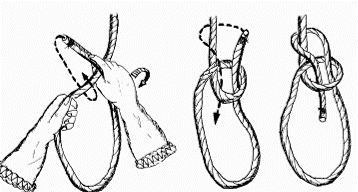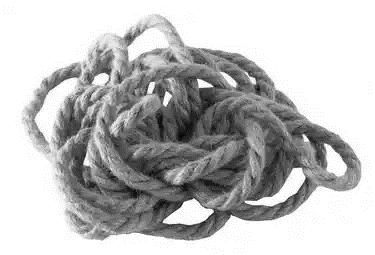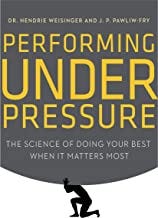Think.
I had the great fortune to spend most of my adult life as a Reconnaissance Marine. Our work consisted of amphibious reconnaissance, deep reconnaissance, surveillance, battle space shaping, and limited-scale raids.
A day (or night) at work might mean exiting a submarine to conduct a sub-surface infiltration of an enemy harbor, or a HAHO parachute insertion, leaping from an aircraft five miles up, and landing somewhere behind enemy lines, to observe and report on activity.
Regardless of the mission, the ability to tie knots was critical to success. Whether securing equipment before a dive, connecting det-cord to an explosive charge on the pillar of a pier, setting a rope to rappel down a cliff face, or just dummy-cording equipment to prevent loss.
Often, my life and the lives of others relied on managing rope, selecting the proper knot, and trying it correctly. So when someone started getting fumble-fingered we resorted to the admonishment, “If you can’t tie knots, tie lots.”
The implication was that if you can tie knots a simple, secure connection is best.
This might be an end of the rope knot like the square knot used to connect ropes of equal diameter
An anchor knot, like a bowline used to make a fixed loop around an object.
A middle of the rope knot like a figure eight loop
Or a specialty knot like an end-of-the-line prusik, a friction hitch used in mountaineering.
Each of these knots is used to make a connection.
I will talk more about the tactical side of my former job in my forthcoming memoir, Tough Rugged Bastards, but this has been a long and winding preamble to a concept that has been on my mind lately, making easy, consistent, and reliable connections in the information I consume.
As I’ve mentioned, I read a lot because I’m curious and want to learn new things. In addition to reading, I listen to podcasts, watch documentaries, and talk to people who are smarter than me about things I want to learn about.
I would like to think that all of that information is neatly coiled in my head, ready to deploy for use like this:
Unfortunately, it often winds up more like this:
To recall and retrieve new information, it is necessary to tie (see what I did there?) the new information to something you already know.
It doesn’t matter how much rope you have wadded up in the bottom of your ruck if you can’t deploy it when needed, just as it doesn’t matter how much knowledge you have wadded up in your brain if you can’t employ it when needed.
So over the next few weeks, I will be exploring different schools of thought, and techniques for building a system that allows you to manage, locate, and retrieve the data you need when you need it to make quick, strong, and relevant connections.
I hope you’ll join me and, just as in mountaineering or ocean swimming, please bring a friend. (We are just a few subscribers shy of 500, and I’d love to eclipse that number this week. Your help is greatly appreciated.)
And, if you have an information management system you love, please leave a comment below. I’d love to hear about it.
Read.
Performing Under Pressure
by Hendrie Weisinger & J.P. Pawlin-Fry
I read a lot of books about improving human performance under adversity because the subject fascinates me. My big takeaway from this one is this -In scientific experimentation when two distinct variables are being measured, it is important to observe for a third confounding variable that has the potential to negate the validity of the experiment. We need to be prepared for the arrival of confounding variables that threaten to thwart our well-laid plans. We can do this by always having a backup re-focus plan.
Write.
For your consideration, another in my long line of carpe diem poems.
Toward the Setting Sun
Days crawl by and years rush after
Before you know it they’ll be gone
Longing’s slow, regret is faster
Pick your flowers, mow your lawn.
Gold’s a dense and weighty metal
Keeps you down and makes you slow
Better you to test your mettle
Better loan more than you owe.
Remorse is a cruel uncaring master
A one-oared raft for you to row
Guilt’s a cold hard-hearted bastard
You’ve got to learn to let it go.
Sun weighs down and leaves you thirsty
Cracked hard ground for you to hoe
Work your work and be found worthy
Better full of weary than full of woe.
A fallow field’s the devil’s playground
His workshop lies in the idle hand
Lift your head-don’t let it hang down
Love your children, love your land.
Plant a tree you won’t sit under
Give you sons and daughters shade
Stand and face the roaring thunder
Welcome the storm, be unafraid.
To the west the sun is setting
To the east it’s long been gone
Keep on forward, leave off fretting
Cover miles before the dawn.
Sunrise brings another promise
A chance to show ‘em what you know
Put fears aside and doubts demolish
Drop some seeds and leave ‘em grow.
Strength is weighed by how you measure
Character measured by how you live
An ounce of gain or a pound of pleasure?
Live a life that’s truly lived.
Repeat.
Words of wisdom from those who said it best.
“Continuous effort– not strength or intelligence – is the key to unlocking our potential. --Winston Churchill
“All things are difficult before they are easy.” --Thomas Fuller
“Knowing is not enough; we must apply. Willing is not enough; we must do.” --Johann Wolfgang von Goethe
“Hope is wishing for a thing to come true. Faith is believing it will come true. Work is making it come true.” --Dr. Norman Vincent Peale
Thanks for reading. See you next Thursday!
Thanks for reading Think. Read. Write. Repeat.!
Share it with a friend, or subscribe for free to receive a new post each Thursday.













Can’t wait for the book to come out!
As always Sir, a masterful weekly dose of common sense. I look forward to this every week and wish I had modeled my work like this. Standing by for more wisdom and inspiration